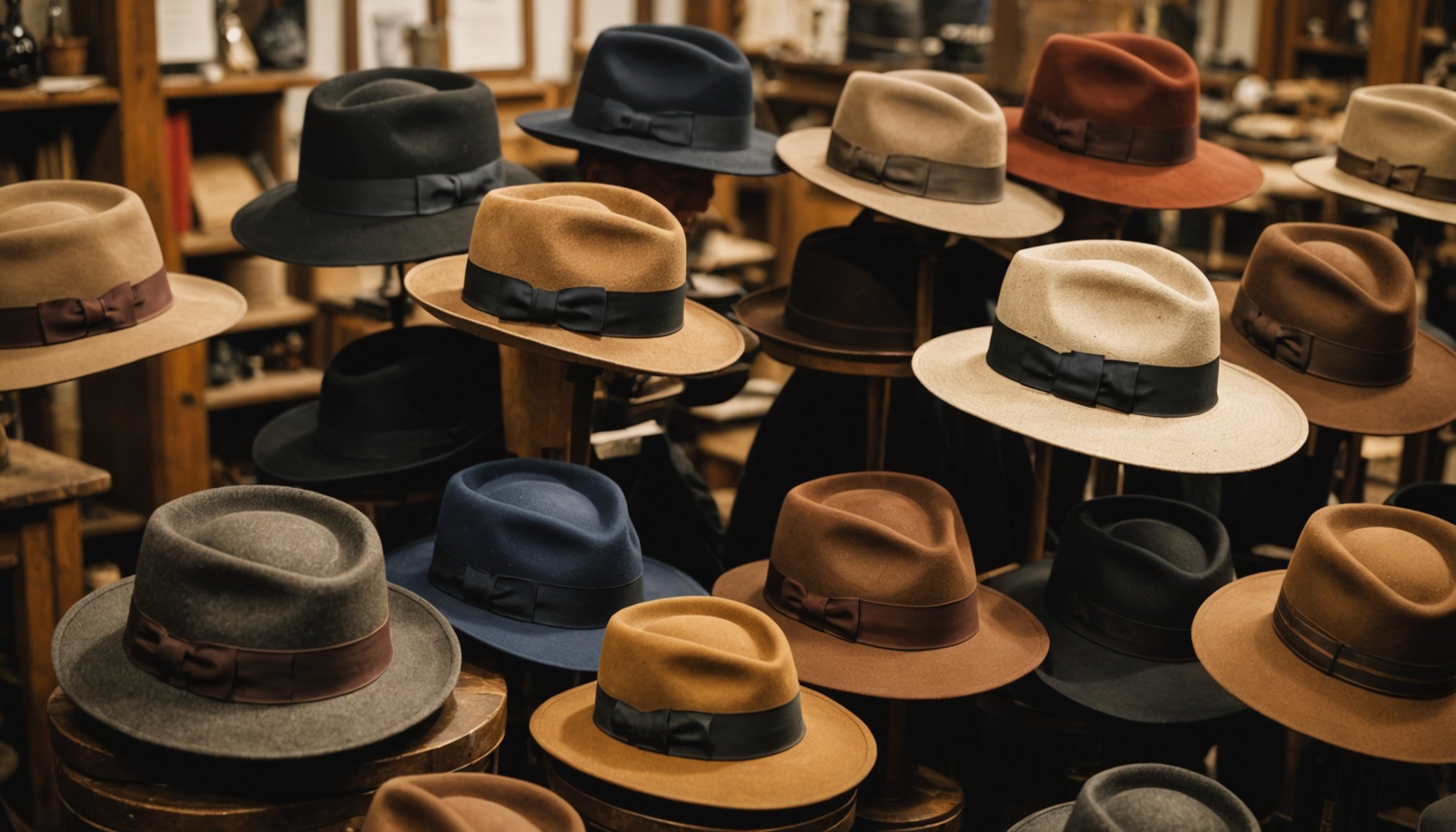Overview of British Hat-Making
British hat-making has long held a historical significance in the realm of fashion. Known for its unique blend of heritage and innovation, it has influenced global styles and trends throughout the centuries. Integral to this artistry are traditional craftsmanship techniques that have been passed down through generations, each contributing to the distinctive elegance of British hats.
The history of hat-making in Britain reflects a deep appreciation for fine detail and quality. Techniques such as blocking, which involves shaping the hat over a wooden mold, and intricate sewing methods are cornerstone practices. These skills have been honed and adapted over time, showcasing the evolution from practical headwear to statement pieces adored by many today.
Also to see : Café russell square: a cozy slice of italy in london
Styles have evolved significantly, with past influences seen in modern creations. From minimalistic designs to ornate creations, the evolution of styles has had a profound impact on contemporary hat-making practices. The fusion of traditional skills with modern aesthetics ensures British hat-making maintains its revered status. This continuous evolution has allowed British hat-makers to retain their relevance while infusing fresh innovations into their craft, ensuring a bright future for the industry.
Notable Hat-Making Workshops
Discovering the flourishing world of hat-making workshops offers enthusiasts unique opportunities to delve into the craft and learn foundational skills. These workshops are often strategically located in vibrant cities, easily accessible to participants eager to immerse themselves in the art of hat-making.
Additional reading : Discover Britain’s Coin Minting Legacy: The Ultimate Interactive Workshop Guide for Tourists
Workshop A: The Hat Academy
Situated in the bustling heart of London, The Hat Academy welcomes both beginners and seasoned hat enthusiasts. Its courses range from weekend intensives to month-long programmes, catering to varying schedules. Beginners can start with basic techniques, while advanced makers refine their craftsmanship techniques.
Workshop B: Edinburgh Hat Studio
Nestled in the charming streets of Edinburgh, this studio offers courses designed to blend traditional methods with contemporary trends. Classes accommodate beginners and intermediate learners, featuring evening sessions perfect for those with busy lifestyles. This setup ensures skills are acquired progressively.
Workshop C: Manchester Millinery School
Located in the lively city of Manchester, this school stands out for its flexible timetables and diverse course durations, from one-day tasters to extensive three-month workshops. Its courses are structured to suit all levels, making it an ideal choice for those pursuing hat-making skills.
Explore these workshops for a hands-on journey into the captivating world of British hat-making.
Craftsmanship Techniques Taught
In British hat-making, mastering craftsmanship techniques is vital for creating exquisite pieces. Workshops often focus on shaping and blocking materials, a foundational skill, which involves manipulating fabrics over molds to achieve desired hat forms. This practice requires patience and precision, crucial for crafting hats that meet high aesthetic standards.
Alongside shaping, sewing and assembling methods are emphasized in training sessions. These skills are essential in piecing together different components of a hat, ensuring that the final product is both sturdy and elegant. Workshops provide learners with hands-on experience, allowing them to gain confidence in their abilities.
Materials selection is another crucial aspect taught in workshops. Learners explore various textiles used in British hat-making, such as felt, straw, and leather. Each material differs in properties and suitability for specific styles, influencing the choice based on factors like durability, comfort, and occasion.
These hat-making skills empower participants to appreciate the detailed craftsmanship involved and foster a deep respect for this traditional art form. By honing these techniques, aspiring hat-makers are well-equipped to create beautiful, high-quality hats that honour the rich heritage of British hat-making.
Prominent Hat Styles in British Culture
The world of British fashion is rich with iconic hat styles that have left an indelible mark on global culture. At the forefront are the classic bowler hats and trilby hats, each representing a unique aspect of British history and character. The bowler hat, with its rounded crown and stiff brim, was originally designed for practicality but has become synonymous with sophistication. Meanwhile, the trilby, often crafted from soft felt, exudes a suave and casual elegance, embodying the versatility of British hat-making.
Exploring the cultural significance of these iconic hats reveals deep-rooted customs and societal norms. Bowler hats, for instance, reflect the industrial era’s ethos, signifying professionalism and class. In contrast, the trilby is associated with artistic flair and casual refinement.
Selecting the right hat style can significantly enhance personal taste and occasion-appropriateness. One might choose a trilby for softer, more personal events, while a bowler could lend formality to public gatherings. By understanding the heritage and hat-making history behind such styles, wearers can make informed decisions, aligning their choices with both tradition and personal preference.
Testimonials and Expert Insights
Testimonials from those who have experienced hat-making workshops are invaluable in understanding the craft’s personal impact. Participants often highlight gaining confidence in their craftsmanship techniques and describe a profound appreciation for the art form. These experiences reveal how hands-on learning not only enhances hat-making skills but also inspires innovation.
Testimonials from Past Participants
Many past attendees praise the workshops for offering practical guidance and real-world applications. Their success stories often include creating their own hats and even starting small businesses. Such opportunities demonstrate how structured learning can transform passion into skillful artistry.
Insights from Industry Experts
Expert insights from established hat-makers provide deeper understanding and professional tips. These professionals offer advice on refining techniques and avoiding common beginner errors. For aspiring craftsmen, incorporating these insights into their practice can be transformative.
Importance of Community in Hat-Making
The community aspect in hat-making fosters collaboration, sharing of ideas, and collective growth. Workshops and forums create networking opportunities, enabling enthusiasts to build relationships and preserve hat-making traditions. A supportive community is essential for sustaining this vibrant craft, encouraging both innovation and adherence to tradition.









